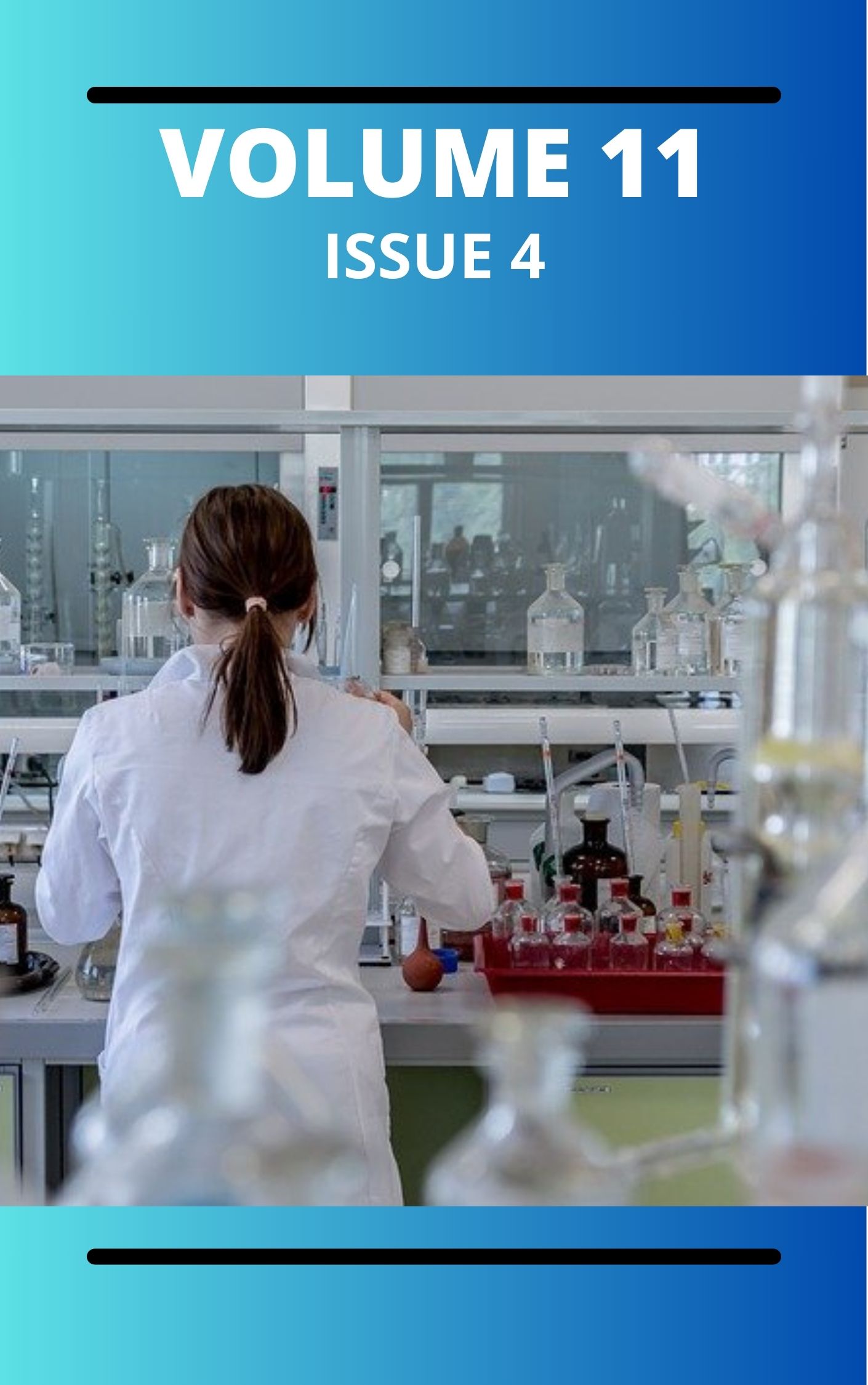Micromorphological and Nutritional Attributes of two Varieties of Vernonia amagdalina Del. Domesticated in Delta State.
DOI:
https://doi.org/10.4314/1ws7v037Keywords:
Micromorphological, nutritional characteristics, Vernonia, amygdalina, Agbor, Ika South, Delta StateAbstract
This study examined the potential of two Vernonia amygdalina varieties (bitter and non-bitter) as sources of nutrients and medicinal compounds. Micromorphological analysis revealed variations in stomata size (bitter: 1.57±0.20 μm; non-bitter: 1.49±0.42 μm), index (bitter: 1.20±0.60%; non-bitter: 2.30±0.21%), and trichome index (bitter: 0.55±0.36%; non-bitter: 0.90±0.19%) between the varieties, while stomata type and anticlinal wall patterns were similar. Both varieties were rich in minerals, with bitter varieties containing higher levels of sodium (7.27±0.43 mg/g), potassium (17.07±0.45 mg/g), phosphorus (3.15±0.41 mg/g), iron (0.65±0.02 mg/g), zinc (0.15±0.03 mg/g), and copper (0.16±0.04 mg/g) compared to non-bitter varieties. Proximate composition analysis showed higher levels of crude fiber (1.76±0.50%), crude protein (21.07±0.30%), and carbohydrate (23.33±0.82%) in non-bitter varieties, while bitter varieties had higher levels of moisture (50.01±0.40%), crude ash (7.95±0.56%), and crude fat (2.15±0.20%). Phytochemical analysis revealed higher levels of tannin (0.13±0.85%), saponin (0.08±0.02%), and flavonoid (0.22±0.09%) in non-bitter varieties, while alkaloid levels (1.26±0.27%) were higher in bitter varieties. These findings suggest that both Vernonia amygdalina varieties are valuable sources of nutrients and phytochemicals, with potential applications in food and medicine.
Downloads
Published
Issue
Section
Similar Articles
- Ayomide Ayomikun Ajiboye, Investigating the Role of Machine Learning Algorithms in Customer Segmentation , Communication In Physical Sciences: Vol. 12 No. 2 (2025): VOLUME 12 ISSUE 2
- Vincent Oseikhuemen Binitie, Ogaga Esharive, Solid mineral potential in the southern Benue Trough: A review , Communication In Physical Sciences: Vol. 11 No. 4 (2024): VOLUME 11 ISSUE 4
- Aniekan Udongwo, Monitoring, Assessment, and Remediation of Heavy Metal Contamination: Techniques, Strategies, and Policy Frameworks , Communication In Physical Sciences: Vol. 10 No. 3 (2023): VOLUME 10 ISSUE 3 (2023-2024)
- Humphrey Ibifubara, Hassan Saheed Ayobami, Erusiafe Nald Ese, Design And Implementation of Cost Effective SMS-Based Online Voting System for Credible election in Nigeria , Communication In Physical Sciences: Vol. 11 No. 4 (2024): VOLUME 11 ISSUE 4
- Abubakar Tahiru, Oluwasanmi M. Odeniran, Shardrack Amoako, Developing Artificial Intelligence-Powered Circular Bioeconomy Models That Transform Forestry Residues into High-Value Materials and Renewable Energy Solutions , Communication In Physical Sciences: Vol. 8 No. 4 (2022): VOLUME 8 ISSUE 4
- Emeka Chima Ogoko, Chemical Information from GCMS of Ethanol Extract of Solanum melongena (Aubergine) Leaf , Communication In Physical Sciences: Vol. 6 No. 1 (2020): VOLUME 6 ISSUE 1
- Taye Temitope Alawode, Molecular Docking Studies on Eudesmane Sesquiterpenes as Potential Anti-leishmanial Agents , Communication In Physical Sciences: Vol. 11 No. 4 (2024): VOLUME 11 ISSUE 4
- L. I. Ibrahim, A. Abdulazzez, A. Usman, U. M. Badeggi, A. I. Muhammad, Comparative Study of the Medicinal Values of Indigoferatinctoria and Gossypium Hirsutum , Communication In Physical Sciences: Vol. 7 No. 4 (2021): VOLUME 7 ISSUE 4
- Uduak Aletan, Elijah Adetola, Ahmed Abudullahi, Olayinka Onifade, Hadiza Kwazo Adamu, Phytochemical analysis, invitro antioxidant activity and GC-MS studies of crude extracts of Cissus populnea stem , Communication In Physical Sciences: Vol. 8 No. 4 (2022): VOLUME 8 ISSUE 4
- Tope Oyebade, Samuel Babatunde, Environmental Chemistry of Radioactive Waste Management , Communication In Physical Sciences: Vol. 9 No. 4 (2023): VOLUME 9 ISSUE 4
You may also start an advanced similarity search for this article.




